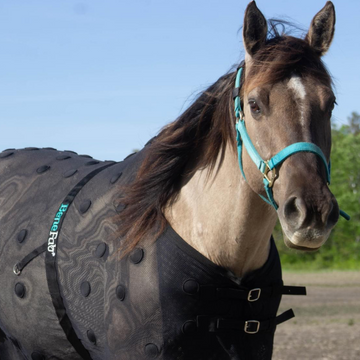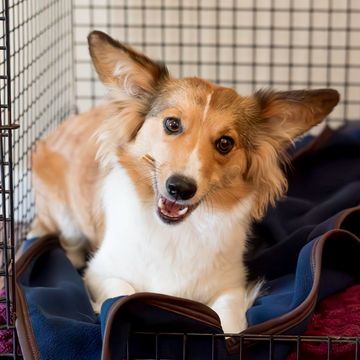As a horse owner, we know that injuries are inevitable. These injuries can come in all different forms and levels of severity. A horse that suffers from a leg injury can be at high risk of becoming permanently lame. As horse owners, we need to make sure we do our best to take care of these injuries, which includes knowing how to wrap an injured horse's leg.

If your horse has suffered from a leg injury, you should call your vet immediately. Your vet will be able to provide medical attention if necessary (i.e. stitches) and can help to decide the proper way to take care of the injury. If you are instructed to keep your horse’s leg wrapped, it is important to do it correctly. A wrap that is too tight can end up hurting your horse even more.
What you will need:
- "Tamed iodine” (betadine) or chlorhexidine scrub
- Antibiotic ointment
- Non-stick pad (Telfa)
- Cotton padding
- Vetwrap
- Elastic, self-stick banage (Elastikon)
First, make sure that the wound is cleaned. Depending on the severity of the injury, your horse may or may not be cooperative. If they will stand for you, scrub the wound to remove any debris such as sawdust, hay, dirt, scabs, etc. Dry the wound before applying the bandage. After the wound is completely dry, apply topical ointment. Now you are ready to begin to bandage and wrap the leg.
- Place the non-stick pad over the wound. This pad should cover the wound and will stick to the ointment.
- Wrap the cotton padding around the leg.
- Hold the cotton padding in place, and wrap it with Vetwrap. The Vetwrap will keep the cotton padding in place for a few days. Wrap the leg just as you normally would from front to back. Make sure the wrap is not too loose or too tight. As you are wrapping, apply even pressure all the way around the leg. You will more than likely use the whole roll of Vetwrap.
- Once you have finished wrapping the leg with Vetwrap, wrap the Elastikon around the end of the Vetwrap. This will keep the bandage from coming undone.
Keep your horse’s leg wrapped for as long as your vet directs you. The bandage should be reapplied at least every other day.
For more information on bandaging a horse’s leg visit:
http://www.thehorse.com/videos/30327/how-to-bandage-a-horses-leg-with-vetrap
 If your horse has suffered from a leg injury, you should call your vet immediately. Your vet will be able to provide medical attention if necessary (i.e. stitches) and can help to decide the proper way to take care of the injury. If you are instructed to keep your horse’s leg wrapped, it is important to do it correctly. A wrap that is too tight can end up hurting your horse even more.
What you will need:
If your horse has suffered from a leg injury, you should call your vet immediately. Your vet will be able to provide medical attention if necessary (i.e. stitches) and can help to decide the proper way to take care of the injury. If you are instructed to keep your horse’s leg wrapped, it is important to do it correctly. A wrap that is too tight can end up hurting your horse even more.
What you will need:






















